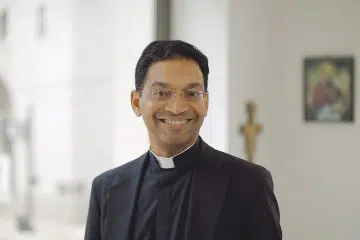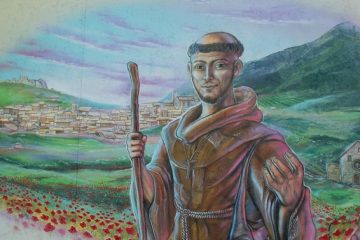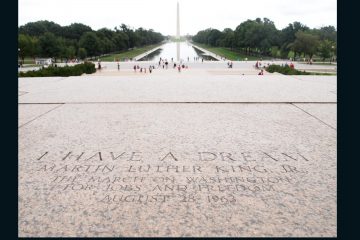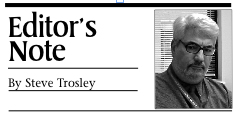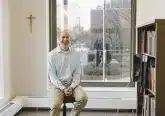Catholic Schools, Bishnu from Bhutan & social media
As the February edition of The Catholic Telegraph came into homes early, you may have been planning ways to celebrate Catholic Schools Week.
Because the annual observance fell on the last week of January, we decided this year to compress our usual preparation time so we could prepare readers who wish to take part in the activities associated with the event. And you should participate because there are so many interesting and impressive things going on in the Catholic schools of the archdiocese.
I am grateful that my parents, grandparents and even an aunt and uncle made it possible for me to attend Catholic elementary and high schools. Although we did not have the extensive curriculum that was offered in public schools or even today’s curriculum, I am thankful for the underlying foundation of the education I received.
First, we learned all subjects in the context of how knowledge showed the glory of God’s creation and the great gift of salvation we received through the life and death of Jesus Christ. But we also learned to think. Our teachers, most of whom were Ursuline nuns, were so confident in their teaching and their faith, they were not afraid to allow us to inquire, to explore and to exchange ideas. As they told us on numerous occasions, they armed us with knowledge in the context of the Catholic faith and trusted that God would guide us when we took on the challenges of the secular world.
Catholic education, combined with a strong family foundation – we saw our parents living the way we were being taught – gave us an excellent start in life and a positive foundation for our adult years.
I often think that Catholic Schools Week should follow or be followed by Catholic Family Week. Of course, every week should be Catholic family week if we’re serious about our faith.
++++
I met an extraordinary man this week — Bishnu, a refugee from Bhutan — who was resettled in the United States with the help of Catholic Charities.
We’re prepping our summer intern — now Miami University graduate Megan Walsh — for a trip to Nepal to report on Maryknoll and Jesuit missionaries there. Bishnu brought a presentation showing conditions in Bhutan after the government there became worried about the success of the Nepali farmers working in the southern part of the country.
Bishnu escaped Bhutan after the government had banned the traditional Nepali clothing, they could not wear it even in their homes and were forbidden to own it. That also went for traditional food and language. Many were imprisoned and killed. His entire family left everything they owned behind and were interred in a refugee camp in Nepal. After 17 years, they came to Cincinnati to be resettled by Catholic Charities. All parishes and schools should bring Bishnu in to tell his story. It’s best told in his own words. And best heard with your own ears.
There are refugees from 16 different ethnic groups that have been or are being settled in southwestern Ohio. It’s something we all need to know more about.
He’s looking forward to buying a house here — almost 100 of the more than 800 Nepali refugees from Bhutan have bought houses here — and his oldest son is going to college, which makes him very proud.
Elsewhere in this edition, you will find a list of things you can do to help refugees being resettled here and later this spring, we’ll have Megan’s stories about her visit to Nepal to talk to Father Joe Thaler, the Maryknoll missionary from our area serving the people there.
+ + + +
The archdiocesan Communications Commission met in January and offered a number of recommendations about how we can better communicate with the people of our archdiocese.
The message is loud and clear, regardless of whom delivers it: use social media.
We’re going to make some changes in our Internet site and are looking for ways to incorporate more social media in our programs. Although I use Facebook and Twitter, I have to admit I still don’t appreciate all of the potential of these new communications tools.
When I started in the newspaper business, I had to learn how to set type in lead. Later, I had to learn how to use photocomposition and crude computers. In the 1990s, I had to make a deadline deal with the publisher to get more than one color photo on the front page of a metropolitan newspaper. I think we’ll figure this new stuff out. The only problem is, will we get it figured out before it’s replaced by something else?




